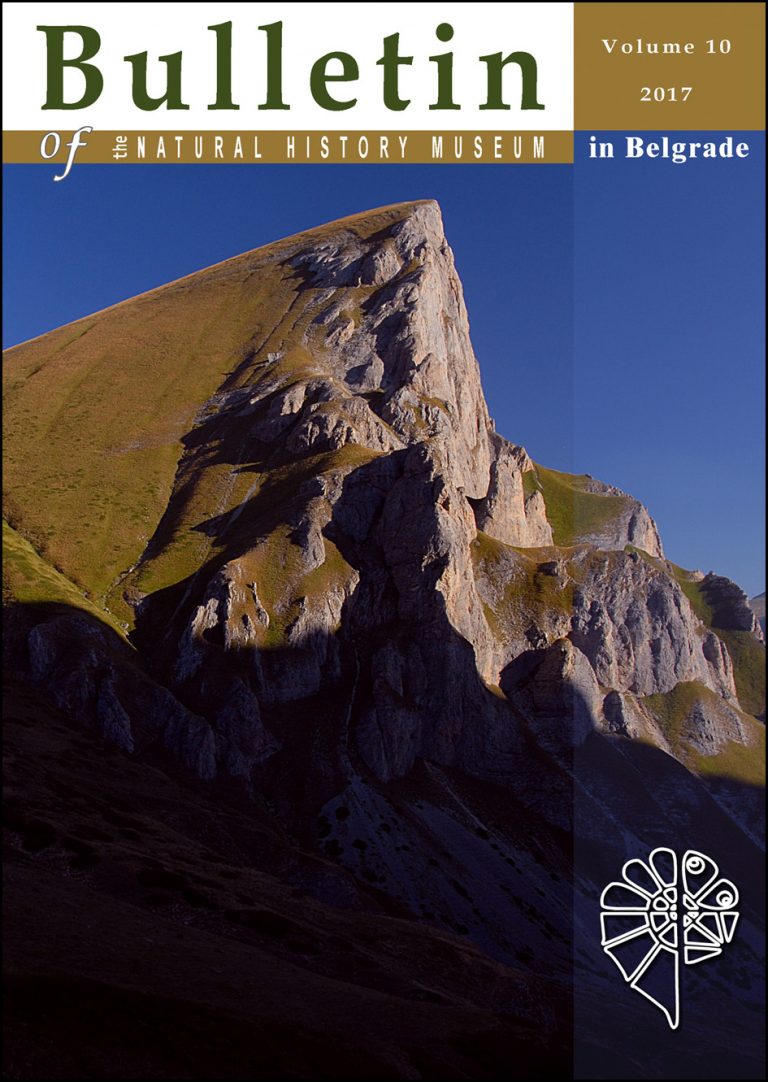
Geology
Among several prospective regions in Serbia, the Djerdap area has been chosen for the nomination in the UNESCO Global Geoparks Network due to many reasons: its strategic position, diverse natural and cultural resources, a long tourism tradition and an aspiration of local residents to be involved in planned promotional activities. Djerdap geopark is positioned in the northeastern part of Serbia, covering a territory of 1330 square kilometers and includes the area of Djerdap National Park, but exceeds it spatially for additional 692 square kilometres. Main initiatives and actions on the establishing Djerdap geopark are presented together with the most valuable natural and cultural-historical aspects as well as future priority tasks.
Key words: Djerdap area, Serbia, UNESCO Global Geoparks Network, natural and cultural characteristics, human resources, initial activities and actions
Rundić, L., Knežević, S.
The miocene fossiliferous sites of the Avala Mt. (Belgrade area, Serbia) and their importance
Sediments of the Middle and Late Miocene (about 16-5.3 Ma) are widespread in the area of Avala Mt. and its vicinity. As a rule, they contain abundant and diverse fossilized representatives of macro and micro fauna that existed during the Middle Miocene in the Paratethys (Rakovica stream, Leštane, Torlak, Kumodraž, Zavojnica River valley, Vrčin). Rich fossil assemblages consist mainly of algae, foraminifers, ostracods, mollusks, corals, bryozoans, echinoderms and crabs as well as otoliths and jaws of fish. Although marine organisms are not found in the Late Miocene sediments, there are numerous and diverse representatives of endemic fauna from the ancient Lake Pannon. The most important sites of Middle and Late Miocene deposits are located at the Torlak hill, in Vrčin, Zuce, Karagača, Beli Potok and Konopljište. They are significant not only for the stratigraphic-paleontological studies, paleogeographic and geodynamic reconstructions during the Miocene but also as valuable geodiversity and geoheritage objects.
Key words: fossiliferous sites, Miocene, Avala Mt., Paratethys, Lake Pannon
Biology
Niketić, M., Melovski, L., Matevski, V., Tomović, G.
Two new species for the flora of Republic of Macedonia
During two botanical expeditions in the Republic of Macedonia in 2017 (Mts Šar Planina and Mt. Jakupica), two plants were found that are new for the flora of this country: Campanula wanneri Rochel in Mt. Jakupica and Carduus ramosissimus Pančić in Mts Šar Planina. The plant species habitats and phytogeographic importance of these new findings were discussed within the scope of their newly established distribution patterns in the Balkan Peninsula.
Key words: Campanula wanneri, Carduus ramosissimus, new records, Republic of Macedonia
Džukić, G., Tomović, L., Anđelković, M., Urošević, A., Nikolić S., Kalezić, M.
The herpetological collection of the Institute for biological research “Siniša Stanković”, University of Belgrade
Pejić, B., Budinski, I., Karapandža, B., Paunović, M.
The first record of European free-tailed bat Tadarida teniotis (Rafinesque, 1814) in Serbia


